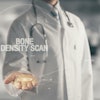Results
"In this study, SMASH contrast-enhanced 3-D MR angiography showed consistent improvements in spatial and/or temporal resolution," the authors wrote.
Despite the shorter breath-hold duration in the SMASH images, only negligible artifact throughout the 3-D volume could be seen in the reconstructed images. Mean vessel sharpness in the increased-spatial-resolution series was 0.74 ± 0.05 in the SMASH images, compared with 0.66 ± 0.05 on the reference images -- a net 12% increase in sharpness on the SMASH images.
On the downside, the SMASH images showed a reduction in SNR and contrast-to-noise ratio of about 40% in the reduced-breath-hold-duration images, and about 55% in the increased-spatial-resolution images.
"The SNR penalty associated with SMASH reconstruction may also be offset, at least to some extent, by using faster contrast material injection rates as the temporal resolution is improved. Some recovery of SNR was observed with increased injection rates in the reduced breath-hold-duration series," the authors wrote.
Because SMASH can increase temporal resolution without sacrificing spatial resolution, it is particularly promising for time-resolved MRA, they wrote, noting that spatial and temporal resolution could be further improved by using a coil array with more elements than the six-element array used in the study.
"....Increases in the spatial and/or temporal resolution of contrast-enhanced 3-D MR angiography are feasible by using the parallel image acquisition strategy of SMASH with a clinical imaging system," they concluded. "On the basis of these results, further studies will be undertaken to assess the value of SMASH for improving image quality and increasing the accuracy of stenosis quantification in clinical applications of contrast-enhanced 3-D MR angiography."
By Eric BarnesAuntMinnie.com staff writer
October 18, 2000
1,2
Let AuntMinnie.com know what you think about this story.
Copyright © 2000 AuntMinnie.com


















